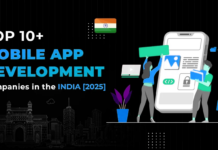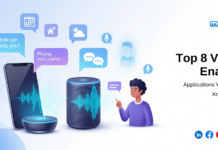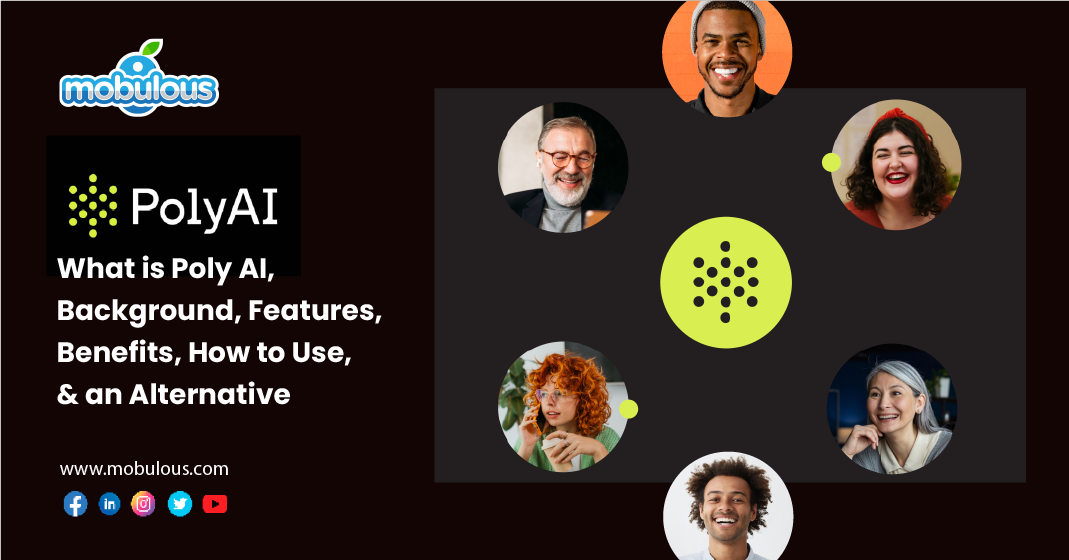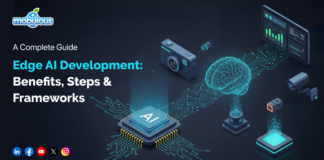Poly AI: What is Poly AI, Background, Features, Benefits, How to Use, & an Alternative
Poly AI is an advanced conversational AI platform that revolutionizes customer service through voice assistants capable of natural and human-like conversations. It uses advanced spoken language technologies and a combination of retrieval and generative AI models that enable it to potentially generate human-like conversations.
This AI was founded in 2017 by a London-based company and a few researchers from the University of Cambridge, including Nikola Mrkšić, Tsung-Hsien Wen, and Pei-Hao Su.
It has transformed how businesses manage customer interactions by combining advanced natural language processing with voice technology in order to create smooth and automated customer experiences that feel genuinely personal.
For Query:- Seek Help From an AI/ML App Development Company!
What is Poly AI?
Poly AI is a London-based conversational artificial intelligence and voice assistant platform that allows businesses to automate customer service interactions with remarkable human-like quality.
It was built on proprietary deep learning technology, and it understands complex queries, maintains context throughout conversations, and responds naturally to the customer’s needs.
Poly AI excels in voice-based interactions that handle everything from appointment scheduling to complex problem-solving across various industries like healthcare, banking, education, retail, and others.
Also Read:- Ambient Intelligence: What is it?
Background of Poly AI
Poly AI was founded in 2017 by a few researchers (Nikola Mrkšić, Tsung-Hsien Wen, and Pei-Hao Su) from the University of Cambridge, North of London. This particular AI has developed a platform that uses advanced spoken language technologies and a combination of generative and retrieval AI models.
This methodology allows natural and human-like conversations that enable customers to speak freely, change, or interrupt topics without the need to disrupt the interaction.
The firm evolved from academic roots to a commercial powerhouse, backed by significant venture capital, including Point72 Ventures, thus raising $70+ million in order to advance conversational AI technology.
In May 2024, Poly AI raised $50 Million in a Series C funding round in order to bring their total funding to $120+ million. This investment reflects confidence in their vision in order to transform customer service through AI-powered voice interactions.
Also Read:- How AI-Driven Development is Transforming the Software Development Lifecycle (SDLC)?
Is Poly AI Free?
Poly AI operates in a subscription-based enterprise pricing model rather than offering free access. Their pricing structure is tailored as per the business size, required features, and implementation scope.
While they don’t provide a free version, Poly AI offers comprehensive demos and proof-of-concept trials for potential enterprise clients.
Pricing generally includes implementation, ongoing support, and customization services tailored to specific business requirements. This methodology ensures that potential users need to contact directly to Poly AI in order to obtain comprehensive pricing information.
Also Read:- What is Robotic Process Automation (RPA)?
Key Features of Poly AI
Poly AI differentiates itself through robust capabilities that elevate automated customer interactions beyond basic chatbots. These features work together in order to create truly conversational experiences across diverse channels. Below are the advanced features of Poly AI:
For Query:- Seek Help From a Chatbot App Development Company!
1. Natural Language Understanding (NLU)
Natural Language Understanding or NLU is a feature that powers the ability of Poly AI to understand sophisticated and natural human speech with remarkable accuracy.
Leveraging proprietary deep learning models, it interprets contextual meanings, recognizes diverse speech patterns like dialects and accents, and handles interruptions.
The system processes nuanced customer queries without requiring rigid and scripted phrasing common in traditional IVR systems.
2. Multi-Turn Conversations
Multi-Turn conversations allow Poly AI to maintain context throughout the entire conversation, which creates fluid and natural dialogues.
The system remembers previous statements, references earlier parts of the conversation, and builds upon established context without forcing users to repeat information.
It can smoothly pivot between topics while maintaining conversation coherence, much like a human agent would.
3. Omnichannel Support
Omnichannel support enables businesses to deploy Poly AI across multiple communication channels while maintaining consistency.
The platform works smoothly across telephony systems, messaging apps, and websites. It provides clients with continuity as they switch between channels, preserving conversation history and context regardless of how they choose to engage.
4. Self-Learning Capabilities
Self-learning capabilities empower Poly AI in order to enhance consistently through each customer interaction. The system examines conversations to identify patterns, refine its responses over time, and detect emerging issues.
It automatically adapts to new vocabularies, evolving business necessities, and client preferences without consistent manual retraining that ensures the AI becomes increasingly effective with use.
5. Seamless API Integrations
This feature connects Poly AI with existing business systems in order to deliver personalized and data-informed responses. The platform integrates with CRMs. reservation systems, payment processors, and other enterprise tools through advanced APIs.
It can pull client records, initiate procedures in third-party systems, and update information across platforms while maintaining secure and compliant data handling practices.
Essential Benefits of Poly AI
Enforcing Poly AI delivers tangible advantages that affect both business operations and client experiences. These advantages extend beyond simple automation, creating value throughout the customer service landscape and providing competitive benefits in today’s digital marketplace:
1. 24/7 Customer Support
Poly AI eradicates time zone constraints by providing round-the-clock customer service without human fatigue or staffing concerns. This consistent availability ensures clients receive quick assistance regardless of when issues arise, significantly improving satisfaction and loyalty.
The platform manages overnight inquiries, holiday traffic, and peak volume periods, maintaining consistent service quality even during times when staffing human agents can be cost-prohibitive or challenging.
2. Reduced Operational Costs
Poly AI substantially lowers customer service expenses by automating routine interactions that conventionally required human agents. Startups and businesses generally report 60 to 80% cost reductions for handled conversations while maintaining high satisfaction ratings.
The platform reduces the need for comprehensive agent training, eradicates costs associated with scaling human teams during busy periods, and minimizes turnover-related expenses in order to deliver consistent return on investment with predictable operating costs.
3. Faster Response Time
Poly AI eradicates wait times by managing various customer inquiries instantly and simultaneously. The platform processes questions and delivers responses in milliseconds, drastically outpacing human service speeds even during peak periods.
The immediate responsiveness satisfies modern consumer expectations for quick service, enhances first-contact resolution metrics, and reduces abandonment rates, directly affecting customer satisfaction scores and reducing the need for follow-up interactions.
4. Higher Customer Engagement
Poly AI builds more personalized and interactive client experiences through natural conversation flows and contextual understanding. The system remembers client preferences, previous interactions, and transaction history to deliver relevant and customized responses that feel genuinely personalized.
This deeper engagement increases client satisfaction, enhances conversion rates, and builds stronger brand relationships compared to conventional IVR systems that usually frustrate users with rigid menus and limited options.
5. Scalability for Businesses
Poly AI handles and manages volume fluctuations effortlessly, supporting business growth without proportional increases in client service resources.
The platform smoothly scales from hundreds to millions of interactions without degrading the performance or requiring additional infrastructure investments.
This flexibility enables businesses to expand into new markets, handle seasonal peaks, and launch promotions without concern for customer service limitations, thus removing conventional constraints on growth strategies.
6. Data-Driven Insights
Poly AI transforms every client interaction into actionable business intelligence through comprehensive analytics. The platform identifies emerging issues, customer sentiment patterns, and common pain points that might otherwise remain hidden.
These insights allow informed business decisions regarding product development, client experience strategies, and service improvements that create a consistent feedback loop that drives ongoing optimization across multiple business functions.
How To Use Poly AI?
Enforcing Poly AI follows a structured process designed specifically to create customized conversational experiences for specific business needs. This approach ensures alignment with company goals while maintaining the natural and human-like quality that differentiates the platform. Below are the points that will help you understand how to use Poly AI perfectly:
1. Design
The implementation begins with a collaborative design phase where Poly AI experts work with your team to map customer journeys and conversation flows.
This process identifies key customer intents, defines appropriate responses, and establishes conversation parameters aligned with your brand voice.
The design incorporates business rules, compliance requirements, and exception handling protocols while maintaining natural conversation patterns that feel genuinely human rather than robotic.
2. Integrate
Once designed, the Poly AI system connects with your existing business infrastructure through secure API implementations. The integration team establishes connections with relevant databases, CRM systems, knowledge bases, and transaction platforms.
This technical foundation enables the AI to access necessary information in real-time, update customer records, process transactions, and maintain seamless data flow between systems while adhering to security standards and compliance requirements.
3. Analyze
After deployment, comprehensive analytics tools monitor performance metrics and conversation quality across all customer interactions.
The analysis identifies successful conversation patterns, potential improvement areas, and emerging customer needs through detailed reporting dashboards.
This continuous monitoring provides visibility into resolution rates, customer satisfaction scores, and operational efficiency metrics, creating accountability and demonstrating return on investment throughout the implementation.
4. Improve
The final stage establishes an ongoing optimization cycle where insights drive continuous system refinements. Regular review sessions with Poly AI specialists examine performance data and recommend adjustments to conversation flows, response patterns, and business logic.
This iterative approach ensures the system evolves alongside changing customer needs, expands to handle new use cases, and continuously improves accuracy and effectiveness based on real-world interaction data.
Is Poly AI Ideal & Safe to Use?
Poly AI delivers enterprise-level security with SOC 2 Type II certification and GDPR compliance, making it suitable for industries with strict data protection requirements.
The platform employs robust encryption, secure data handling protocols, and regular security audits to protect sensitive customer information.
While ideal for large businesses seeking sophisticated voice automation, smaller companies may find the implementation scope and customized pricing structure more suitable for established operations with substantial customer service volume.
Poly AI Alternative — Voiceflow
Voiceflow offers a compelling alternative to Poly AI with its intuitive visual conversation design platform that democratizes conversational AI development.
While Poly AI focuses on enterprise voice assistants, Voiceflow provides a comprehensive ecosystem for designing, prototyping, and launching conversational experiences across multiple channels with less technical overhead.
Voiceflow’s visual canvas approach allows teams to collaborate on conversation design without coding expertise, making it accessible to smaller organizations.
The platform features robust testing tools, analytics capabilities, and integration options, though its voice capabilities may not match Poly AI’s specialized depth. Pricing is more transparent, with tiered subscription models including a free starter option for exploration.
The Bottom Line
Poly AI represents the advancement of conversational AI technology that offers businesses and enterprises a powerful solution for automating client interactions without sacrificing quality.
With its advanced language capabilities, proven benefits of cost reduction and enhanced client experiences, and seamless integrations, it stands as a valuable investment for enterprises seeking to modernize their customer service.
While implementation requires careful planning and highly suitable resources, the robust features and consistent evolution of the platform make it a formidable tool in today’s competitive business landscape.
FAQ’s — Poly AI
Q. What industries can benefit most from implementing Poly AI?
Ans. Financial services, healthcare, retail, telecommunications, and travel industries benefit most from Poly AI. These sectors typically handle high volumes of repetitive customer inquiries that can be automated while still requiring natural conversation capabilities. Companies with complex products, extensive customer support needs, or multinational operations see the greatest ROI.
Q. How long does it take to implement Poly AI in an organization?
Ans. Poly AI implementation typically takes 6-12 weeks, depending on complexity and integration requirements. The process involves initial discovery sessions, conversation design, system integration, testing phases, and gradual rollout. Simpler use cases with minimal integrations deploy faster, while enterprise-wide implementations with multiple systems connections require longer timeframes.
Q. Does Poly AI support multiple languages for global businesses?
Ans. Yes, Poly AI supports multiple languages and can handle varied accents and dialects within those languages. The platform’s language capabilities extend to major global languages including English, Spanish, French, German, Japanese, and Mandarin. Implementation in additional languages requires training data specific to each language and may affect the timeline and pricing.
Q. What kind of metrics and analytics does Poly AI provide?
Ans. Poly AI delivers comprehensive analytics, including conversation completion rates, resolution success, escalation points, average handling time, and customer satisfaction scores. The platform identifies common customer intents, tracks conversation flows, highlights potential improvement areas, and provides sentiment analysis. These insights are accessible through customizable dashboards with exportable reporting capabilities.
Q. How does Poly AI handle conversations it cannot resolve?
Ans. Poly AI gracefully manages unresolvable conversations through intelligent escalation protocols that transfer customers to human agents when necessary. The system recognizes its limitations through confidence scoring, provides context to human agents during transfers, and continues learning from these interactions. Businesses can customize escalation triggers based on specific parameters like topic sensitivity or customer emotion.
































